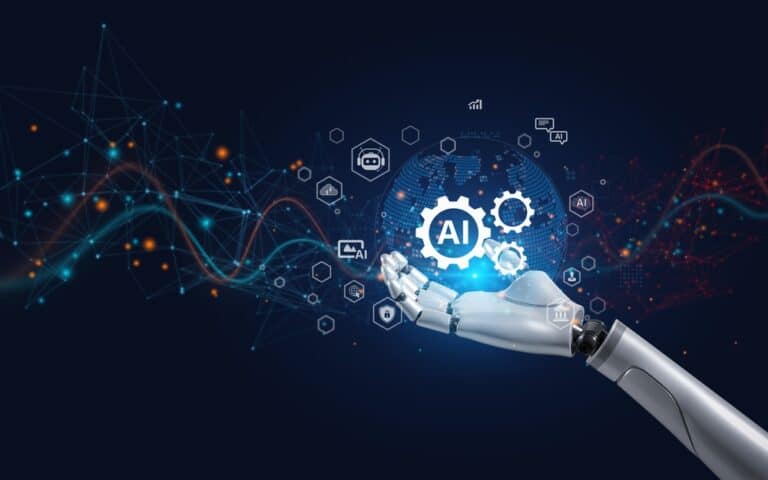Generative AI must be viewed as a feature of industry solutions – not a solution itself.
Generative AI technology does a lot of things, but it can’t do everything. Too many organizations see generative AI as a standalone capability, but it must be a feature of a more comprehensive AI strategy. With this approach, businesses are better equipped to back up an AI response with facts and supporting data, especially if the answer isn’t obvious.
Certain industries will benefit greatly from applying generative AI to existing analytic platforms:
- Health care organizations can develop generative AI-powered tools for personalized medicine, such as the creation of patient-specific avatars for use in clinical trials and the generation of individualized treatment plans.
- In the financial services industry, generative AI can create simulated data for stress testing and scenario analysis to help banks predict future financial risks and prevent losses. And virtual assistants (like chatbots) can provide humanlike customer service 24/7.
- In life sciences, generative AI can augment and accelerate clinical trials by rapidly synthesizing vast amounts of trial data, simulating patient populations, and optimizing protocol design.
- In the manufacturing industry, generative AI can simulate production to identify improvements in quality, reliability, maintenance, energy efficiency, yield and throughput by finding hidden insights, validating models with synthetic data, and boosting predictive accuracy.
- In the energy sector, utilities and other power-related organizations can use a small set of image training data and algorithms that generate thousands of physically accurate images, to train computer vision models. By doing this, operators can predict and actively manage grid equipment failure and responses to extreme events, like wildfires.
Businesses tap existing knowledge bases to extract the most value from generative AI.
A key ingredient of extracting generative AI value will be ensuring organizations have a strong knowledge management strategy – starting by leveraging existing proprietary, industry-specific knowledge bases. Progressive organizations will fine-tune existing large language models (LLMs) by injecting industry domain knowledge into generative AI workflows. We will see the integration of industry knowledge as a repeating pattern across the life sciences, insurance, banking, and health care industries.
Generative AI is not a “get out of jail free card” for poor data management.
Generative AI requires strong knowledge management, which demands great data management. If you have neglected the quality of data in your enterprise or have not defined a proper data strategy, you will not get value out of generative AI on your data.
Generative AI experiences have lowered the barriers to human interaction with data and systems, but generative AI is not a “get out of jail free card” for poor data management and data governance. Those who have implemented a strong data management discipline are uniquely advantaged in creating a competitive advantage with generative AI.
Generative AI agent frameworks mature to meet enterprise complexity.
The complexity of generative AI will spark the application of new software architectures that orchestrate information flow across enterprise systems, predictive models, and enhance conversational experiences.
Retrieval-augmented generation (RAG) is an AI framework for retrieving and incorporating up-to-date information with LLMs. This is a great first step, but this architecture will be limited to a certain scale and complexity of use cases in the organization. Agent-based frameworks – like the pioneering work of AutoGen from Microsoft – facilitate building networks of roles and functions that leverage RAGs, LLMs, and enterprise systems to meet the complexity of today’s organizations.
Generative AI gets cost vs. value analysis.
Like the cloud and its consumption costs, generative AI is another consumption-driven business meter. Businesses investing significant funds in generative AI must conduct value vs. cost analyses and quickly shut down projects that have zero or minimal return to the bottom line.
“What if?” will be the most important question business leaders ask … and answer.
Disruption is everywhere and it’s not getting easier. As a business leader, are you able to answer these questions?
- What if critical parts of my supply chain are disrupted by a climate event?
- What if the value of my commercial real estate portfolio drops by 48%?
- What if the core value of my business is challenged by an emerging generative AI capability?
- What if workforce productivity is affected by a global pandemic or geopolitical conflict?
AI scales human productivity and decision making and will help answer these complex and critical questions to ensure business resiliency.
This article was submitted by SAS.

